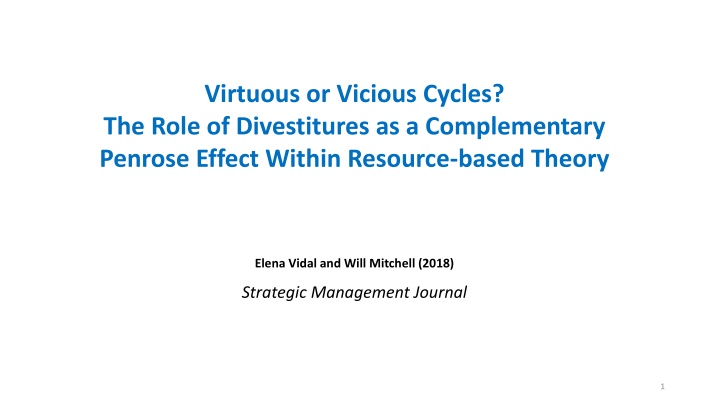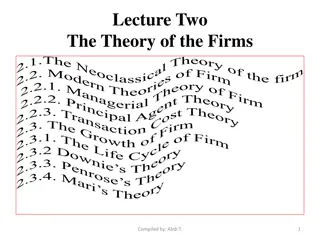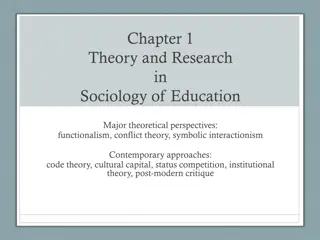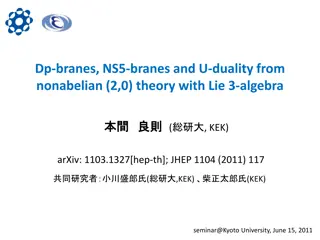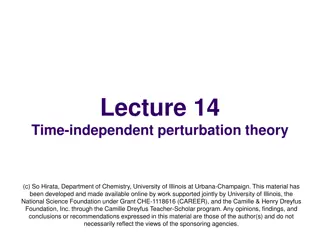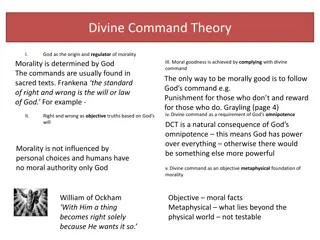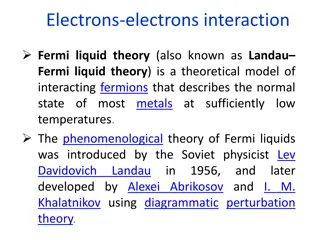Role of Divestitures in Resource-based Theory
Changes in resources through divestitures can impact firm performance and growth. This study explores how divestitures free up resources for firms, affecting profitability and sales growth differently for low and high-performing firms in the pharmaceutical industry. It investigates the influence of divestitures on performance, resource utilization, and business survival through empirical analysis.
Uploaded on Feb 22, 2025 | 3 Views
Download Presentation

Please find below an Image/Link to download the presentation.
The content on the website is provided AS IS for your information and personal use only. It may not be sold, licensed, or shared on other websites without obtaining consent from the author.If you encounter any issues during the download, it is possible that the publisher has removed the file from their server.
You are allowed to download the files provided on this website for personal or commercial use, subject to the condition that they are used lawfully. All files are the property of their respective owners.
The content on the website is provided AS IS for your information and personal use only. It may not be sold, licensed, or shared on other websites without obtaining consent from the author.
E N D
Presentation Transcript
Virtuous or Vicious Cycles? The Role of Divestitures as a Complementary Penrose Effect Within Resource-based Theory Elena Vidal and Will Mitchell (2018) Strategic Management Journal 1
Introduction Changes to resources via addition, deletion, and recombination can create new competitive advantage for firms (RBV). Improvements in performance (profit and growth) are bounded by availability of financial and managerial resources (Penrose Effect). The Complementary Penrose Effect, o Firms divest existing resources, and o Re-invest in higher potential opportunities for growth. The complementary Penrose effect is tested and extended by answering How low- and high-performing firms profitability and growth is affected by divestiture, when it frees-up financial and managerial resources? 2
Prior Literature For low-performing firms o Divest poorly o Results show sales drop, but accounting profit improves For high-performing firms o Free up financial and managerial resources for strategic purpose to have growth (economic rents) o For example, Abbott divested $300 million and re-invested to have $2 billion in sales growth. 3
Data and Variables Investigated 414 firms operating in the global pharmaceutical industry from 1978 to 2012. Dependent Variables: Accounting profit (ROA) and sales growth Independent Variables: Prior performance (ROA) and divestiture 4
Sub-Research Questions In total the article has four analyses (or research questions) RQ-1: Impact of divestiture on performance? o For low-performing firms Divestiture increases profitability (ROA) in the short-run but little change for sales growth. o For high-performing firms Divestiture has little impact on short-term profitability, but sales growth increases strongly in the long-run. RQ-2: What resources do divestitures free-up? o Financial resources are now free to pay debts or re-invest in new opportunities. o Managerial Capacity is free to be (re-)deployed. But some managers can go with the divested units/resources. 5
Sub-Research Questions RQ-3: How do resources from divestiture influence performance? o Low performers appear use the resources to seek new external growth. Hence, they seek to eliminate underperforming resources and use the financial resources to replace them quickly by acquiring new resources externally. o Or sometimes make M&A but these are also typically not fruitful. o High performers are more likely to re-invest in existing operations to increase sales growth. RQ-4: How do divestiture influence business survival? o Low-performers become target of acquisition because They position themselves as profitable with reduced asset base While struggle in the long-run to remain viable o High performers remain profitable and dynamic in the long-run to merit independence. 6
Virtuous or Vicious Cycles? In most industries and modern economies o Divestiture for low-performers is part of the downward spiral, the vicious circle of low performance > divestiture > acquisition. o For high performing firms, divestiture supports a virtuous cycle by creating space to engage managerial capacity to engage problems and take advantage of new opportunities (Complementary Penrose Effect). Divestiture create different pathways for low- and high performers (Extended Complementary Penrose Effect). 7
Summary Divestiture has strikingly different results for low- and high-performing firms o For low-performing firms Improvement in short term profitability by eliminating extremely poor performing resources. Quick fix of operations though M&A but to no avail. Thus, become targets of acquisition and survival in danger. 8
Summary Divestiture has strikingly different results for low- and high-performing firms o High-performing firms Do not focus on profitability but long-term sales growth. Through freed financial resources focus/invest in improved operations. Thus, avoid acquisition and survive independently. 9
